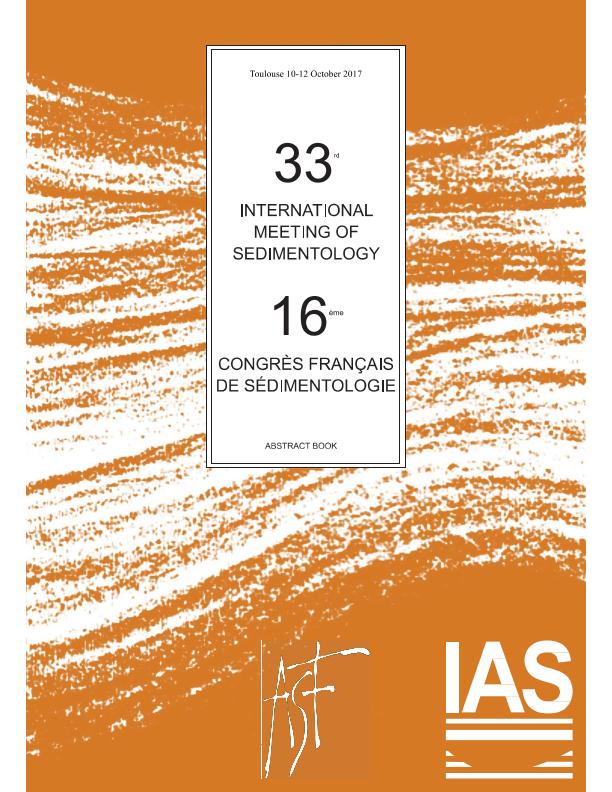Mostrar el registro sencillo del ítem
dc.contributor.author
Schwarz, Ernesto

dc.contributor.author
Veiga, Gonzalo Diego

dc.contributor.author
Isla, Manuel Fermín

dc.date.available
2023-08-24T10:10:00Z
dc.date.issued
2017
dc.identifier.citation
A critical review of architectural styles in foreshore-to-upper-shoreface sand bodies: What does preservation tell us about morphology and controlling factors?; 33rd International Meeting of Sedimentology; 16ème Congrès Français de Sèdimentologie; Toulouse; Francia; 2017; 813-813
dc.identifier.uri
http://hdl.handle.net/11336/209167
dc.description.abstract
Despite the knowledge on morphodynamics of regressive, wave-dominated barrier systems, processes responsible for sand accretion and seaward migration operating in the upper-shoreface and foreshore regions are far from been understood. Additionally, as the morphological configuration of this region can vary from non-barred coasts, to more complex bar-and-trough systems in short time spans (101-103), it is reasonable to assume that architectural styles of foreshore-to-upper-shoreface deposits would represent the time-averaged, preserved conditions during accretion. In this contribution we analyze architectural styles of sand bodies developed in recent and ancient regressive barrier systems in order to discuss what information is ultimately preserved and their key controlling factors.The architectural styles of examples from Cainozoic and Cretaceous times were selected. Cainozoic examples include sedimentology, GPR-based architectural analysis, and reconstructions on gradients and morphology. Outcrop examples where facies and architectural styles allowed to reconstruct gradients and infer morphological configurations, were selected.Foreshore-to-upper-shoreface architectural styles characterized by closely spaced, foreset beds are dominantly developed when foreshore gradients are > 3° (typically 5-11°), or when they are 2-3°, but with a significant break in slope compared to the upper-shoreface gradient (< 0.5°). Both architectural styles are developed in a wide range of sand grain sizes (very fine to coarse sand), but they differ in stratal geometries and facies distribution. In the first case, foreset beds have a tangential geometry, with faint discrimination between foreshore and upper-shoreface sediments (either in facies or slope). Parallel planar lamination and small-scale trough cross-stratification are common, the latter becoming dominant at the bottomsets. In the second case, inclined foreshore strata (1-3° seaward dipping) downlap onto subhorizontal upper-shoreface deposits together with a distinct change in facies, from parallel planar lamination in the foreshore deposits to large-scale trough cross-stratification in the upper-shoreface strata. These two facies associations can be also present in a third architectural style, but in this case without evident foreshore-related inclined foreset beds. This is by far the most common architectural style described in outcrop, and reconstructing gradients indicate relatively gentle foreshores (1-3°) combined with regular upper-shoreface slopes (0.8-1.9°).The analyzed dataset suggests that the generation and preservation of any single architectural style seems unrelated to the barrier system (e.g., strandplains, barrier islands) or regressive shoreline trajectory (ascending, horizontal, descending), neither linked to a specific grain-size range. In contrast, each architectural style appears to be associated with the relationship between foreshore and upper-shoreface gradients, and the dominant morphology at the time of accretion. Packages of tangential foreset beds seem to record non-barred conditions and steep profiles, with successive beachfaces accreting seaward on short times. The other two architectural styles attest the preservation of barred conditions and gentler profiles, with dune-related deposits, probably developed in trough settings, gradually overlaid by foreshore sediments. Noteworthy, bar-related deposits (swash or longshore bars) and landward dipping surfaces were hardly ever identified in these examples. Therefore, these macroforms and their short-term migrating processes supplying sand to the beachfaces, though well-documented in modern settings, could be geological features with rather low preservation potential in many regressive barrier systems.
dc.format
application/pdf
dc.language.iso
eng
dc.publisher
International Association of Sedimentology
dc.rights
info:eu-repo/semantics/openAccess
dc.rights.uri
https://creativecommons.org/licenses/by-nc-sa/2.5/ar/
dc.subject
FORESHORE-UPPER-SHOREFACE DEPOSITS
dc.subject
PRESERVATION
dc.subject
CONTROLS
dc.subject
NEUQUEN BASIN
dc.subject.classification
Geología

dc.subject.classification
Ciencias de la Tierra y relacionadas con el Medio Ambiente

dc.subject.classification
CIENCIAS NATURALES Y EXACTAS

dc.title
A critical review of architectural styles in foreshore-to-upper-shoreface sand bodies: What does preservation tell us about morphology and controlling factors?
dc.type
info:eu-repo/semantics/publishedVersion
dc.type
info:eu-repo/semantics/conferenceObject
dc.type
info:ar-repo/semantics/documento de conferencia
dc.date.updated
2023-08-14T11:20:36Z
dc.journal.pagination
813-813
dc.journal.pais
Francia

dc.journal.ciudad
Toulouse
dc.description.fil
Fil: Schwarz, Ernesto. Consejo Nacional de Investigaciones Científicas y Técnicas. Centro Científico Tecnológico Conicet - La Plata. Centro de Investigaciones Geológicas. Universidad Nacional de La Plata. Facultad de Ciencias Naturales y Museo. Centro de Investigaciones Geológicas; Argentina
dc.description.fil
Fil: Veiga, Gonzalo Diego. Consejo Nacional de Investigaciones Científicas y Técnicas. Centro Científico Tecnológico Conicet - La Plata. Centro de Investigaciones Geológicas. Universidad Nacional de La Plata. Facultad de Ciencias Naturales y Museo. Centro de Investigaciones Geológicas; Argentina
dc.description.fil
Fil: Isla, Manuel Fermín. Consejo Nacional de Investigaciones Científicas y Técnicas. Centro Científico Tecnológico Conicet - La Plata. Centro de Investigaciones Geológicas. Universidad Nacional de La Plata. Facultad de Ciencias Naturales y Museo. Centro de Investigaciones Geológicas; Argentina
dc.relation.alternativeid
info:eu-repo/semantics/altIdentifier/url/https://www.sedimentologists.org/ims
dc.relation.alternativeid
info:eu-repo/semantics/altIdentifier/url/https://ims2017.sciencesconf.org/data/IMS_2017_Abstracts_book.pdf
dc.conicet.rol
Autor

dc.conicet.rol
Autor

dc.conicet.rol
Autor

dc.coverage
Internacional
dc.type.subtype
Congreso
dc.description.nombreEvento
33rd International Meeting of Sedimentology; 16ème Congrès Français de Sèdimentologie
dc.date.evento
2017-10-10
dc.description.ciudadEvento
Toulouse
dc.description.paisEvento
Francia

dc.type.publicacion
Book
dc.description.institucionOrganizadora
International Association of Sedimentology
dc.source.libro
33rd International Meeting of Sedimentology; 16ème Congrès Français de Sèdimentologie
dc.date.eventoHasta
2017-10-12
dc.type
Congreso
Archivos asociados
